Computational Fatigue Analysis of Auxetic Cellular Structures Made of SLM AlSi10Mg Alloy
Abstract
1. Introduction
2. Selection of Optimised Auxetic Cellular Structures
2.1. Auxetic Cellular Structures
2.2. Topology Optimised Auxetic Structures
- Selection of the topology from the Pareto front (Figure 2a, dark grey area).
- Determination of the medial axis of the topology.
- Simplification of the medial axis to straight lines between the line connection points (Figure 2b, red lines).
- Thickening of the simplified medial axis to obtain the geometry; the horizontal and vertical lines retained their thickness, while a new thickness was defined to the oblique lines of the medial axis. The thickness of these lines was set to such a value that the topology area remained the same (Figure 2b, light grey area).
- All remaining sharp corners were rounded using an equal fillet radius R (Figure 2c).
3. Material Characterisation and Fatigue Analyses
3.1. Material Characterisation
3.2. Strength Analysis
3.3. Fatigue Life Determination
4. Discussion
5. Conclusions
- The microstructure of treated SLM AlSi10Mg alloy consists of bands, which were produced by varying the scan direction in each subsequent layer. The material porosity is more frequent and larger in the near-surface layers, where pores were formed at the end/beginning of scanning during the SLM process.
- The obtained material parameters by the quasi-static tests (proportional limit, ultimate tensile strength, strain at rupture) are comparable to the results presented by the other researchers.
- The obtained computational results have shown that less auxetic structures (higher Poisson ratios) tend to have a better fatigue life expectancy (the longest fatigue life has been obtained for the structure topology with the minimum auxetic characteristics).
- The fillet radius of cellular struts has a significant impact on fatigue life. Computational analyses have shown that the fatigue life decreases for smaller fillet radiuses (less than 0.3 mm) as a consequence of high-stress concentrations and also for larger fillet radiuses (more than 0.6 mm) due to the movement of the plastic zone away from the edge of the cell connections. Besides the fillet radius sizes, other reasons for stress concentrations might exist. This should be investigated in future research.
- The fatigue life in this study was obtained using the simplified Universal Slope method, where the material parameters were determined by quasi-static tensile tests considering the partly porous structure of analysed SLM AlSi10Mg alloy (Figure 5). For a more accurate determination of fatigue life of real components made of SLM AlSi10Mg alloy, the comprehensive Low Cycle Fatigue (LCF) tests should be performed to determine the appropriate LCF material properties, where the influence of pores will be considered in detail. Once the LCF material parameters are known, the standardised strain life approach could be used for the subsequent fatigue analysis.
- The obtained computational results provide a basis for further investigation including experimental testing of the fabricated auxetic cellular structures made of SLM AlSi10Mg alloy under the cyclic loading conditions.
Author Contributions
Funding
Conflicts of Interest
References
- Savolainen, J.; Collan, M. How additive manufacturing technology changes business models? Review of literature. Addit. Manuf. 2020, 32, 101070. [Google Scholar] [CrossRef]
- Plocher, J.; Panesar, A. Review on design and structural optimisation in additive manufacturing: Towards next-generation lightweight structures. Mater. Des. 2019, 183, 108164. [Google Scholar] [CrossRef]
- Chunyong, L.; Yazhou, H.; Ning, L.; Xianrui, Z.; Hongshui, W.; Xinping, Z.; Yulan, F.; Jingyun, H. Laser polishing of Ti6Al4V fabricated by selective laser melting. Metals 2020, 10, 191. [Google Scholar] [CrossRef]
- Mugwagwa, L.; Yadroitsev, I.; Matope, S. Effect of process parameters on residual stresses, distortions, and porosity in selective laser melting of maraging steel 300. Metals 2019, 9, 1042. [Google Scholar] [CrossRef]
- Attaran, M. The rise of 3-D printing: The advantages of additive manufacturing over traditional manufacturing. Bus. Horiz. 2017, 60, 677. [Google Scholar] [CrossRef]
- Gao, W.; Zhang, Y.; Ramanujan, D.; Ramani, K.; Chen, Y.; Williams, C.B.; Wang, C.L.; Shin, Y.C.; Zhang, S.; Zavattieri, P.D. The status, challenges, and future of additive manufacturing in engineering. Comput. Aided Des. 2015, 69, 65–89. [Google Scholar] [CrossRef]
- Jardini, A.L.; Larosa, M.A.; Filho, R.M.; Zavaglia, C.A.C.; Bernardes, L.F.; Lambert, C.S.; Calderoni, D.R.; Kharmandayan, P. Cranial reconstruction: 3D biomodel and custom-built implant created using additive manufacturing. J. Cranio-Maxillofac. Surg. 2014, 42, 1877–1884. [Google Scholar] [CrossRef]
- Mahmound, D.; Elbestawi, M. Lattice structures and functionally graded materials applications in additive manufacturing of orthopedic implants: A review. J. Manuf. Mater. Process. 2017, 1, 13. [Google Scholar] [CrossRef]
- Chuang, C.H.; Chen, S.; Yang, R.J.; Vogiatzis, P. Topology optimisation with additive manufacturing consideration for vehicle load path development. Int. J. Numer. Methods Eng. 2017, 1434–1445. [Google Scholar] [CrossRef]
- Abdi, M.; Ashcroft, I.; Wildman, R.D. Design optimisation for an additively manufactured automotive component. Int. J. Powertrains 2018, 7, 142–161. [Google Scholar] [CrossRef]
- Seabra, M.; Azevedo, J.; Araújo, A.; Reis, L.; Pinto, E.; Alves, N.; Santos, R.; Mortagua, J.P. Selective laser melting (SLM) and topology optimisation for lighter aerospace components. Procedia Struct. Integr. 2016, 1, 289–296. [Google Scholar] [CrossRef]
- Zhu, J.H.; Zhang, W.H.; Xia, L. Topology optimisation in aircraft and aerospace structures design. Arch. Comput. Methods Eng. 2016, 23, 595–622. [Google Scholar] [CrossRef]
- Bader, C.; Patrick, W.G.; Kolb, D.; Hays, S.G.; Keating, S.; Sharma, S.; Dikovsky, D.; Belocon, B.; Weaver, J.C.; Silver, P.A.; et al. Grown, printed, and biologically augmented: An additively manufactured microfluidic wearable, functionally templated for synthetic microbes, 3D print. Arch. Addit. Manuf. 2016, 3, 79–89. [Google Scholar] [CrossRef]
- Simar, A.; Godet, S.; Watkons, T.R. Highlights of the special issue on metal additive manufacturing. Mater. Charact. 2018, 143, 1–4. [Google Scholar] [CrossRef]
- Herzog, D.; Seyda, V.; Wycisk, E.; Emmelmann, C. Additive manufacturing of metals. Acta Mater. 2016, 117, 371–392. [Google Scholar] [CrossRef]
- Ismael, A.; Wang, C.S. Effect of Nb additions on microstructure and properties of γ-TiAl based alloys fabricated by selective laser melting. Trans. Nonferrous Metals Soc. China 2019, 29, 1007–1016. [Google Scholar] [CrossRef]
- Bagherifard, S.; Beretta, N.; Monti, S.; Riccio, M.; Bandini, M.; Guagliano, M. On the fatigue strength enhancement of additive manufactured AlSi10Mg parts by mechanical and thermal post-processing. Mater. Des. 2018, 145, 28–41. [Google Scholar] [CrossRef]
- Aboulkhair, N.T.; Tuck, C.; Ashcroft, I.; Maskery, I.; Everitt, N.M. On the precipitation hardening of selective laser melted AlSi10Mg. Metall. Mater. Trans. A 2015, 46, 3337–3341. [Google Scholar] [CrossRef]
- Kempen, K.; Thijs, L.; Van Humbeeck, J.; Kruth, J.P. Mechanical properties of AlSi10Mg produced by selective laser melting. Phys. Procedia 2012, 39, 439–446. [Google Scholar] [CrossRef]
- Zhonghua, L.; Zezhou, K.; Peikang, B.; Yunfei, N.; Guang, F.; Wenpeng, L.; Shuai, Y. Microstructure and tensile properties of AlSi10Mg alloy manufactured by multi-laser beam selective laser melting (SLM). Metals 2019, 9, 1337. [Google Scholar] [CrossRef]
- Fousováa, M.; Dvorskýa, D.; Michalcováa, A.; Vojtěcha, D. Changes in the microstructure and mechanical properties of additively manufactured AlSi10Mg alloy after exposure to elevated temperatures. Mater. Charact. 2018, 137, 119–126. [Google Scholar] [CrossRef]
- Takata, N.; Kodaira, H.; Suzuki, A.; Kobashi, M. Size dependence of microstructure of AlSi10Mg alloy fabricated by selective laser melting. Mater. Charact. 2018, 143, 18–26. [Google Scholar] [CrossRef]
- Zhou, L.; Mehta, A.; Schulz, E.; Mcwilliams, B.; Cho, K.; Sohn, Y. Microstructure, recipitates and hardness of selectively laser melted AlSi10Mg alloy before and after heat treatment. Mater. Charact. 2018, 143, 5–17. [Google Scholar] [CrossRef]
- Daniewicz, S.R.; Shamsai, N. An introduction to the fatigue and fracture behaviour of additive manufactured parts. Int. J. Fatigue 2017, 94, 167. [Google Scholar] [CrossRef]
- Beevers, E.; Brandão, A.D.; Gumpinger, J.; Gschweitl, M.; Seyfert, C.; Hofbauer, P.; Rohr, T.; Ghidini, T. Fatigue properties and material characteristics of additively manufactured AlSi10Mg—Effect of the contour parameter on the microstructure, density, residual stress, roughness and mechanical properties. Int. J. Fatigue 2018, 117, 148–162. [Google Scholar] [CrossRef]
- Siddique, S.; Muhammad, I.; Wycisk, E.; Emmelmann, C.; Walther, F. Influence of process-induced microstructure and imperfections on mechanical properties of AlSi12 processed by selective laser melting. J. Mater. Proc. Tech. 2015, 221, 205–213. [Google Scholar] [CrossRef]
- Siddique, S.; Awd, M.; Tenkamp, J.; Walther, F. Development of a stochastic approach for fatigue life prediction of AlSi12 alloy processed by selective laser melting. Eng. Failure Anal. 2017, 79, 34–50. [Google Scholar] [CrossRef]
- Di Giovanni, M.T.; de Menezes, J.T.; Bolelli, G.; Cerri, E.; Castrodeza, E.M. Fatigue crack growth behavior of a selective laser melted AlSi10Mg. Eng. Fract. Mech. 2019, 217, 106564. [Google Scholar] [CrossRef]
- Awd, M.; Siddique, S.; Walther, F. Microstructural damage and fracture mechanisms of selective laser melted Al-Si alloys under fatigue loading. Theor. Appl. Fract. Mech. 2020, 106, 102483. [Google Scholar] [CrossRef]
- Sienkiewicz, J.; Płatek, P.; Jiang, F.; Sun, X.; Rusinek, A. Investigations on the mechanical response of gradient lattice structures manufactured via SLM. Metals 2020, 10, 213. [Google Scholar] [CrossRef]
- Xiao, L.; Song, W.; Wang, C.; Liu, H.; Tang, H.; Wang, J. Mechanical behaviour of open-cell rhombic dodecahedron Ti-6Al-4V lattice structure. Mater. Sci. Eng. A 2015, 640, 375–384. [Google Scholar] [CrossRef]
- Maconachie, T.; Leary, M.; Lozanovski, B.; Zhang, X.; Qian, M.; Faruque, O.; Brandt, M. SLM lattice structures: Properties, performance, applications and challenges. Mater. Des. 2019, 183, 108137. [Google Scholar] [CrossRef]
- Boniotti, L.; Beretta, S.; Patriarca, L.; Rigoni, L.; Foletti, S. Experimental and numerical investigation on compressive fatigue strength of lattice structures of AlSi7Mg manufactured by SLM. Int. J. Fatigue 2019, 128, 105181. [Google Scholar] [CrossRef]
- Dallago, M.; Winiarski, B.; Zanini, F.; Carmignato, S.; Benedetti, M. On the effect of geometrical imperfections and defects on the fatigue strength of cellular lattice structures additively manufactured via Selective Laser melting. Int. J. Fatigue 2019, 124, 348–360. [Google Scholar] [CrossRef]
- Zargarian, A.; Esfahanian, M.; Dadkhodapouor, J.; Ziaei-Rad, S.; Zamani, D. On the fatigue behavior of additive manufactured lattice structures. Theor. Appl. Fracture Mech. 2019, 100, 225–232. [Google Scholar] [CrossRef]
- Zhang, C.; Zhu, H.; Liao, H.; Cheng, Y.; Hu, Z.; Zeng, X. Effect of heat treatments on fatigue property of selective laser melting AlSi10Mg. Int. J. Fatigue 2018, 116, 513–522. [Google Scholar] [CrossRef]
- Tang, M.; Pistorius, P.C. Oxides, porosity and fatigue performance of AlSi10Mg parts produced by selective laser melting. Int. J. Fatigue 2017, 94, 192–201. [Google Scholar] [CrossRef]
- Muralidharan, U.; Manson, S.S. Modified universal slopes equation for estimation of fatigue characteristics. Trans. ASME J. Eng. Mater. Tech. 1988, 110, 55–58. [Google Scholar] [CrossRef]
- Glodež, S.; Klemenc, J.; Zupanič, F.; Vesenjak, M. The high-cycle fatigue behaviour and fracture analysis of SLM AlSi10Mg alloy. Trans. Nonferrous Metals Soc. China 2020, in press. [Google Scholar]
- Ashby, M.F.; Evans, A.; Fleck, N.A.; Gibson, L.J.; Hutchinson, J.W.; Wadley, H.N.G. Metal Foams: A Design Guide; Elsevier Science: Burlington, MA, USA, 2000. [Google Scholar]
- Lehmhus, D.; Vesenjak, M.; de Schampheleire, S.; Fiedler, T. From stochastic foam to designed structure: Balancing cost and performance of cellular metals. Materials 2017, 10, 922. [Google Scholar] [CrossRef]
- Lim, T.-C. Auxetic Materials and Structures; Springer: Berlin/Heidelberg, Germany, 2015; ISBN 978-981-287-274-6. [Google Scholar]
- Lakes, R.S. Foam structures with a negative poisson’ s ratio. Science 1987, 235, 1038–1040. [Google Scholar] [CrossRef]
- Salit, V.; Weller, T. On the feasibility of introducing auxetic behavior into thin-walled structures. Acta Mater. 2009, 57, 125–135. [Google Scholar] [CrossRef]
- Novak, N.; Vesenjak, M.; Ren, Z. Auxetic cellular materials—A Review. Strojniški Vestn. J. Mech. Eng. 2016, 62, 485–493. [Google Scholar] [CrossRef]
- Yao, Y.T.; Uzun, M.; Patel, I. Workings of auxetic nano-materials. J. Achiev. Mater. Manuf. Eng. 2011, 49, 585–593. [Google Scholar]
- Schwerdtfeger, J.; Heinl, P.; Singer, R.F.; Körner, C. Auxetic cellular structures through selective electron-beam melting. Phys. Status Solidi 2010, 247, 269–272. [Google Scholar] [CrossRef]
- Grima-Cornish, J.N.; Grima, J.N.; Attard, D. A novel mechanical metamaterial exhibiting auxetic behavior and negative compressibility. Materials 2019, 13, 79. [Google Scholar] [CrossRef]
- Schwerdtfeger, J.; Schury, F.; Stingl, M.; Wein, F.; Singer, R.F.; Körner, C. Mechanical characterisation of a periodic auxetic structure produced by SEBM. Phys. Status Solidi 2012, 249, 1347–1352. [Google Scholar] [CrossRef]
- Liu, L.; Hu, H. A review on auxetic structures and polymeric materials. Sci. Res. Essays 2010, 5, 1052–1063. [Google Scholar]
- Duncan, O.; Allen, T.; Foster, L.; Senior, T.; Alderson, A. Fabrication, characterisation and modelling of uniform and gradient auxetic foam sheets. Acta Mater. 2017, 126, 426–437. [Google Scholar] [CrossRef]
- Dobnik Dubrovski, P.; Novak, N.; Borovinšek, M.; Vesenjak, M.; Ren, Z. In-plane behavior of auxetic nonwoven fabrics based on rotating square unit geometry under tensile load. Polymers 2019, 11, 1040. [Google Scholar] [CrossRef] [PubMed]
- Ng, W.S.; Hu, H. Woven fabrics made of auxetic plied yarns. Polymers 2018, 10, 226. [Google Scholar] [CrossRef]
- Zulifqar, A.; Hu, H. Geometrical analysis of bi-stretch auxetic woven fabric based on re-entrant hexagonal geometry. Text. Res. J. 2019. [Google Scholar] [CrossRef]
- McDonald, S.A.; Dedreuil-Monet, G.; Yao, Y.T.; Alderson, A.; Withers, P.J. In situ 3D X-ray microtomography study comparing auxetic and non-auxetic polymeric foams under tension. Phys. Status Solidi 2011, 248, 45–51. [Google Scholar] [CrossRef]
- Novak, N.; Vesenjak, M.; Tanaka, S.; Hokamoto, K.; Ren, Z. Compressive behaviour of chiral auxetic cellular structures at different strain rates. Int. J. Impact Eng. 2020, 141, 103566. [Google Scholar] [CrossRef]
- Imbalzano, G.; Tran, P.; Ngo, T.D.; Lee, P.V. Three-dimensional modelling of auxetic sandwich panels for localised impact resistance. J. Sandw. Struct. Mater. 2015. [Google Scholar] [CrossRef]
- Nečemer, B.; Kramberger, J.; Vuherer, T.; Glodež, S. Fatigue crack initiation and propagation in re-entrant auxetic cellular structures. Int. J. Fatigue 2019, 126, 241–247. [Google Scholar] [CrossRef]
- Tomažinčič, D.; Vesenjak, M.; Klemenc, J. Prediction of static and low-cycle durability of porous cellular structures with positive and negative Poisson’s ratios. Theor. Appl. Fract. Mech. 2020, 106, 102479. [Google Scholar] [CrossRef]
- Novak, N.; Vesenjak, M.; Ren, Z. Computational simulation and optimisation of functionally graded auxetic structures made from inverted tetrapods. Phys. Status Solidi B 2017, 254. [Google Scholar] [CrossRef]
- Al-Rifaie, H.; Sumelka, W. The Development of a new shock absorbing uniaxial graded auxetic damper (UGAD). Materials 2019, 12, 2573. [Google Scholar] [CrossRef]
- Novak, N.; Hokamoto, K.; Vesenjak, M.; Ren, Z. Mechanical behaviour of auxetic cellular structures built from inverted tetrapods at high strain rates. Int. J. Impact Eng. 2018, 122, 83–90. [Google Scholar] [CrossRef]
- Foster, L.; Peketi, P.; Allen, T.; Senior, T.; Duncan, O.; Alderson, A. Application of auxetic foam in sports helmets. Appl. Sci. 2018, 8, 354. [Google Scholar] [CrossRef]
- Airoldi, A.; Bettini, P.; Panichelli, P.; Oktem, M.F.; Sala, G. Chiral topologies for composite morphing structures—Part I: Development of a chiral rib for deformable airfoils. Phys. Status Solidi B 2015, 1445, 1435–1445. [Google Scholar] [CrossRef]
- Airoldi, A.; Bettini, P.; Panichelli, P.; Oktem, M.F.; Sala, G. Chiral topologies for composite morphing structures—Part II: Novel configurations and technological processes. Phys. Status Solidi B 2015, 1454, 1446–1454. [Google Scholar] [CrossRef]
- Ngo, T.D.; Kashani, A.; Imbalzano, G.; Nguyen, K.T.Q.; Hui, D. Additive manufacturing (3D printing): A review of materials, methods, applications and challenges. Compos. Part. B Eng. 2018. [Google Scholar] [CrossRef]
- Borovinšek, M.; Novak, N.; Vesenjak, M.; Ren, Z.; Ulbin, M. Designing 2D auxetic structures using multi-objective topology optimisation. Mater. Sci. Eng. A 2020, in press. [Google Scholar]
- Ngnekoua, J.N.D.; Nadot, Y.; Henaff, G.; Nicolai, J.; Kan, W.H.; Cairney, J.M.; Ridosz, L. Fatigue properties of AlSi10Mg produced by additive layer manufacturing. Int. J. Fatigue 2019, 119, 160–172. [Google Scholar] [CrossRef]
- Ansys® Academic Research Mechanical Release; ANSYS, Inc. Southpointe, 2600 Ansys Drive: Canonsburg, PA, USA, 2020; R1 (20.1.0.2019111719). Available online: https://www.ansys.com/ (accessed on 26 May 2020).
- Stephens, R.I.; Fatemi, A.; Stephens, R.R.; Fuchs, H.O. Metal. Fatigue in Engineering; John Wiley & Sons Inc.: New York, NY, USA, 2001. [Google Scholar]
- MATLAB ver. R2020a (9.8.0.1323502) win64; The MathWorks Inc., 1 Apple Hill Drive: Natick, MA 01760-2098, USA, 2020. Available online: https://www.mathworks.com/ (accessed on 26 May 2020).


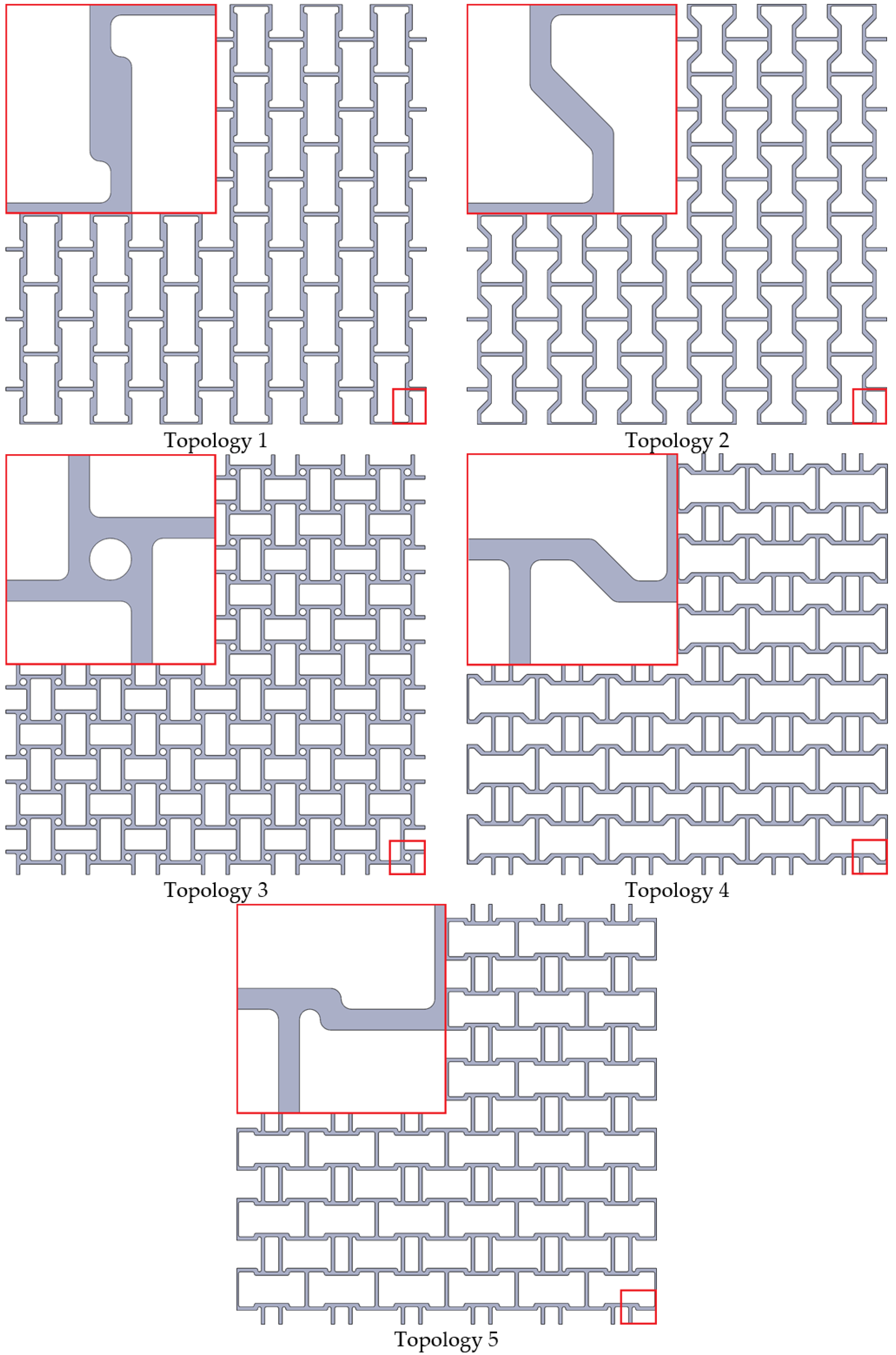
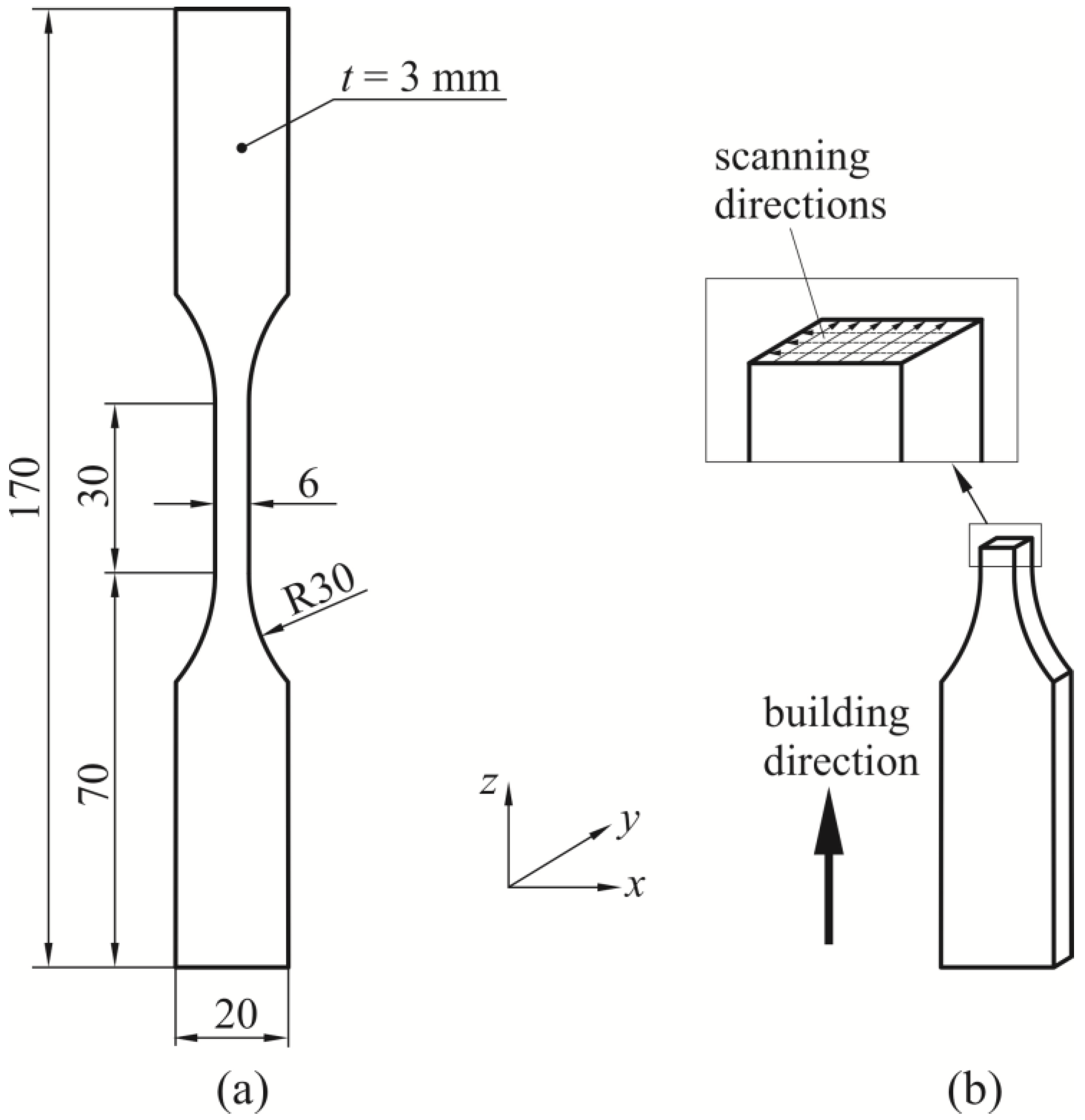
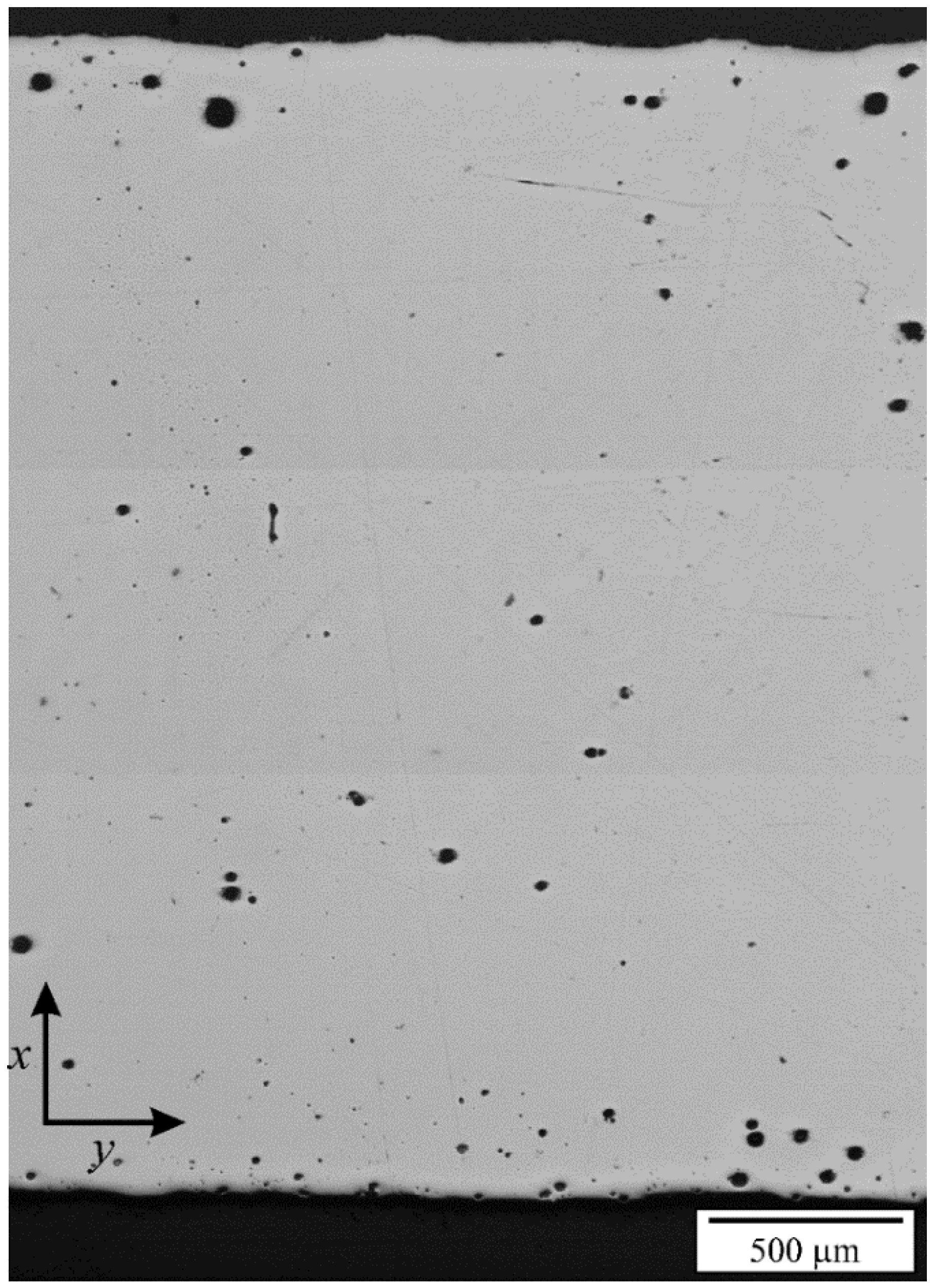

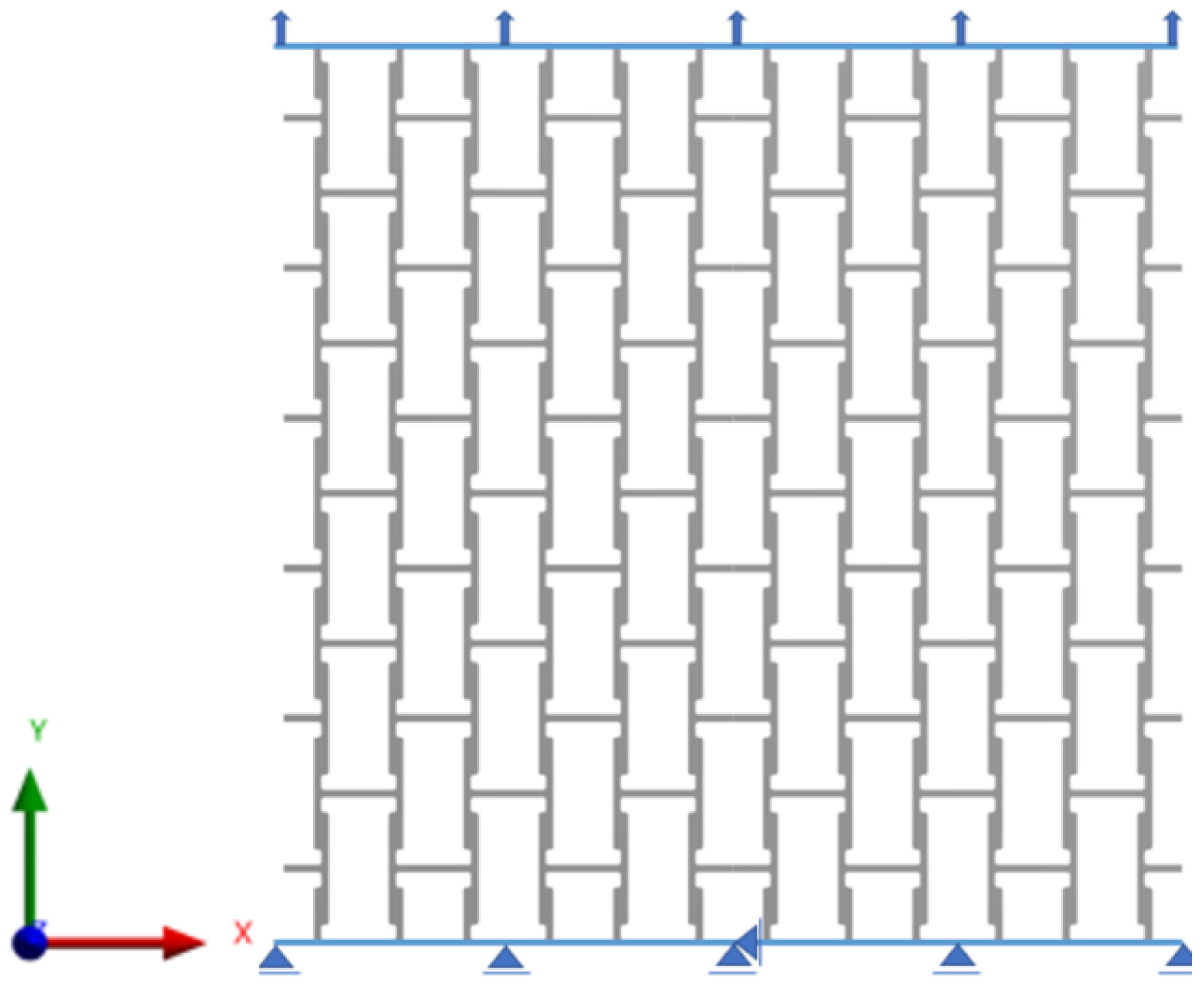
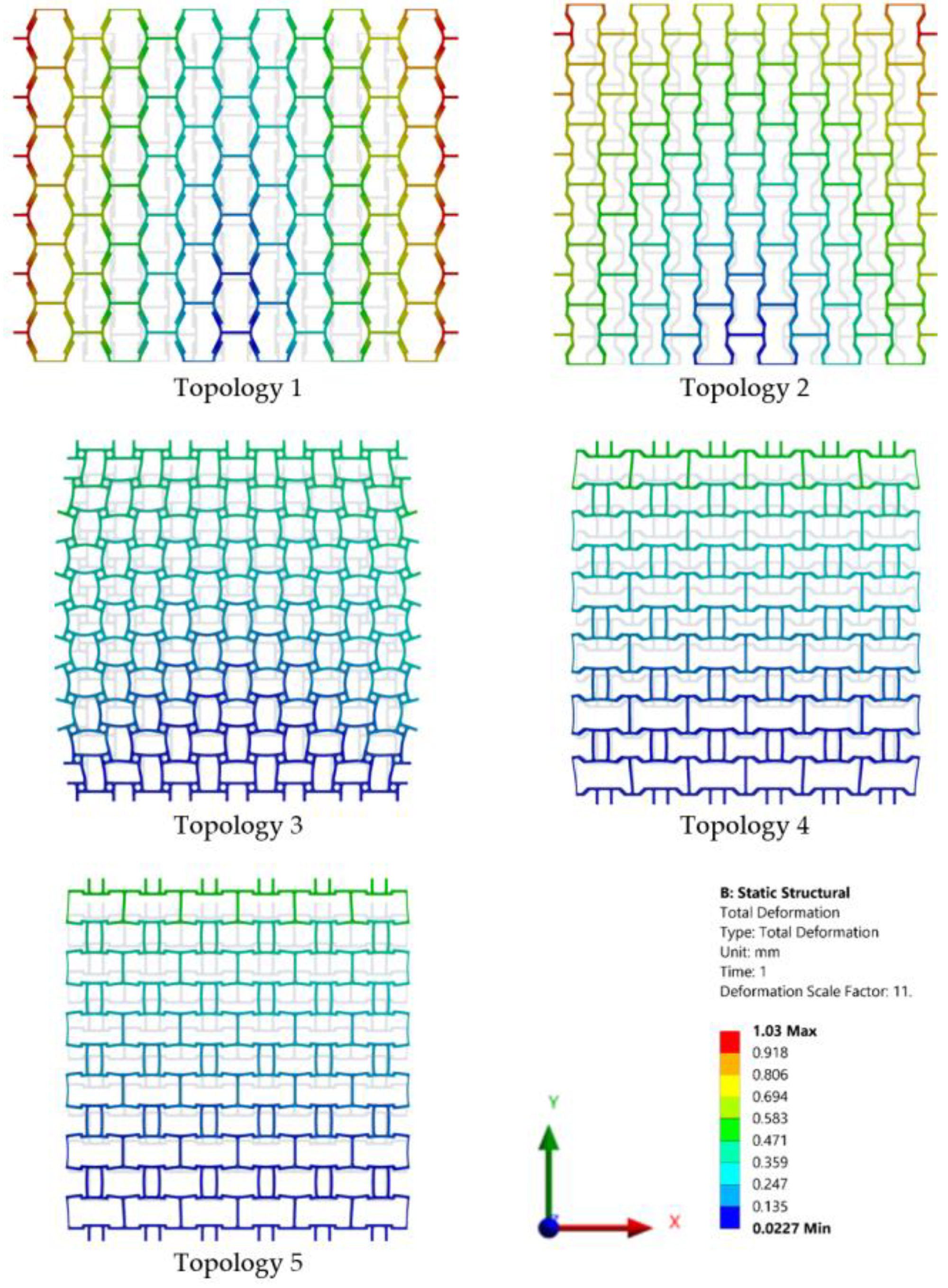
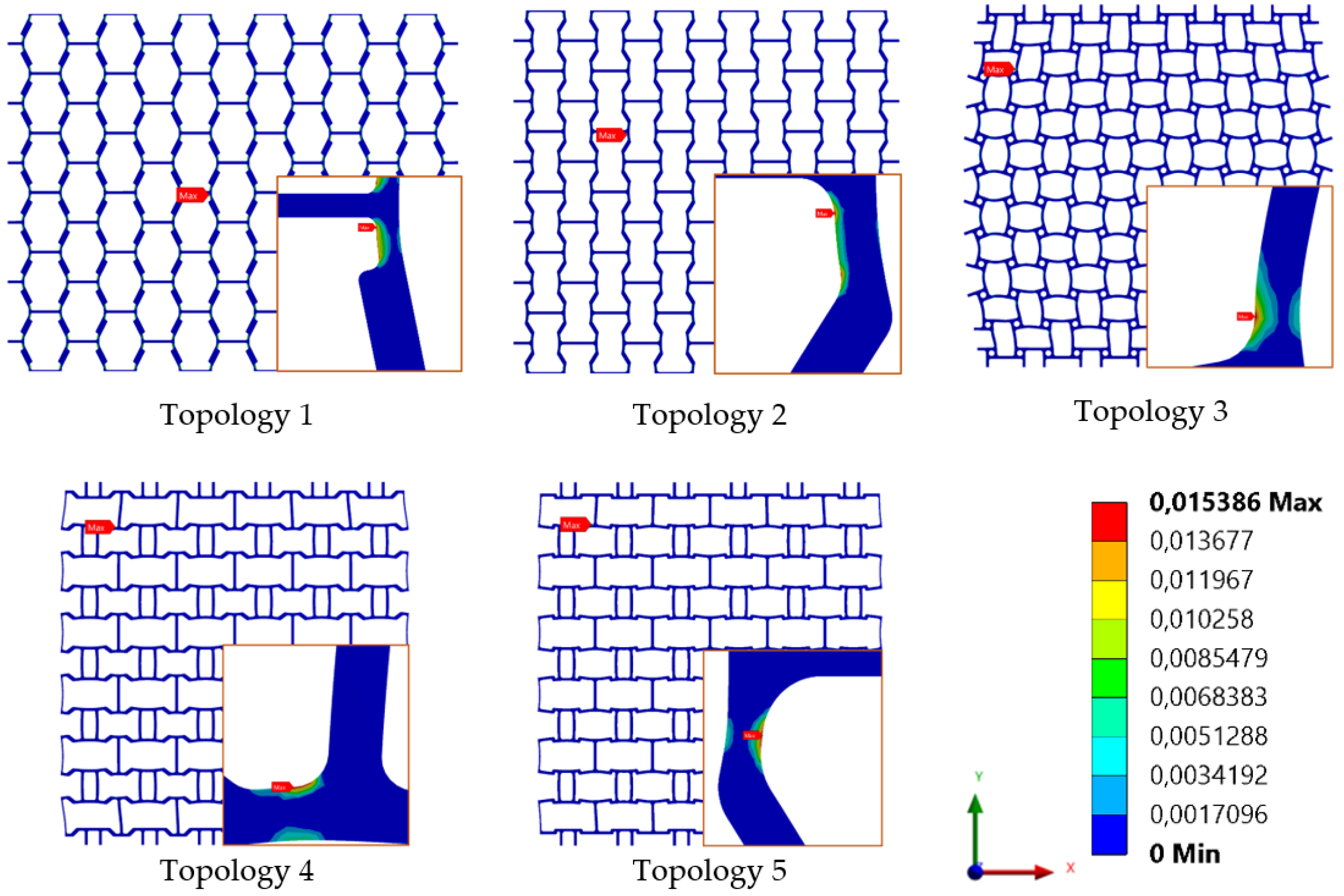


| Layer thickness: 30μm | ||||||||||
| Volume rate with the standard parameters: 4.8 mm2/s | ||||||||||
| Surface roughness (as-built, cleaned): Ra 15–19 μm; Rz 96–115 μm | ||||||||||
| The density with the standard parameters: 2.68 g/cm³ | ||||||||||
| Material composition (maximum values in %) | ||||||||||
| Al | Si | Fe | Cu | Mn | Mg | Ni | Zn | Pb | Sn | Ti |
| Bal. | 9–11 | 0.55 | 0.05 | 0.45 | 0.2–0.45 | 0.05 | 0.1 | 0.05 | 0.05 | 0.15 |
| Elastic Modulus E (MPa) | Poisson’s Ratio ν (-) | Yield Stress Rp0,2 (MPa) | Ultimate Tensile Strength UTS Rm (MPa) | Strain at Rupture A5 (%) | True Fracture Strain (-) |
|---|---|---|---|---|---|
| 70900 | 0.3 | 180 | 318 | 3.35 | 0.031 |
| Topology | Mass (g) | Displacement x-direction (mm) | Equivalent Elastic Strain (mm/mm) | Equivalent Plastic Strain (mm/mm) | Poisson Ratio (-) | Unit Cell’s Poisson Ratio (-) |
|---|---|---|---|---|---|---|
| 1 | 0.10 | 0.964 | 0.00408 | 0.0154 | −2.41 | −4.01 |
| 2 | 0.09 | 0.381 | 0.00307 | 0.0180 | −0.95 | −2.71 |
| 3 | 0.12 | 0.280 | 0.00362 | 0.0094 | −0.67 | −0.92 |
| 4 | 0.10 | 0.080 | 0.00312 | 0.0022 | −0.20 | −0.35 |
| 5 | 0.09 | 0.040 | 0.00323 | 0.0011 | −0.01 | −0.19 |
© 2020 by the authors. Licensee MDPI, Basel, Switzerland. This article is an open access article distributed under the terms and conditions of the Creative Commons Attribution (CC BY) license (http://creativecommons.org/licenses/by/4.0/).
Share and Cite
Ulbin, M.; Borovinšek, M.; Vesenjak, M.; Glodež, S. Computational Fatigue Analysis of Auxetic Cellular Structures Made of SLM AlSi10Mg Alloy. Metals 2020, 10, 945. https://doi.org/10.3390/met10070945
Ulbin M, Borovinšek M, Vesenjak M, Glodež S. Computational Fatigue Analysis of Auxetic Cellular Structures Made of SLM AlSi10Mg Alloy. Metals. 2020; 10(7):945. https://doi.org/10.3390/met10070945
Chicago/Turabian StyleUlbin, Miran, Matej Borovinšek, Matej Vesenjak, and Srečko Glodež. 2020. "Computational Fatigue Analysis of Auxetic Cellular Structures Made of SLM AlSi10Mg Alloy" Metals 10, no. 7: 945. https://doi.org/10.3390/met10070945
APA StyleUlbin, M., Borovinšek, M., Vesenjak, M., & Glodež, S. (2020). Computational Fatigue Analysis of Auxetic Cellular Structures Made of SLM AlSi10Mg Alloy. Metals, 10(7), 945. https://doi.org/10.3390/met10070945






